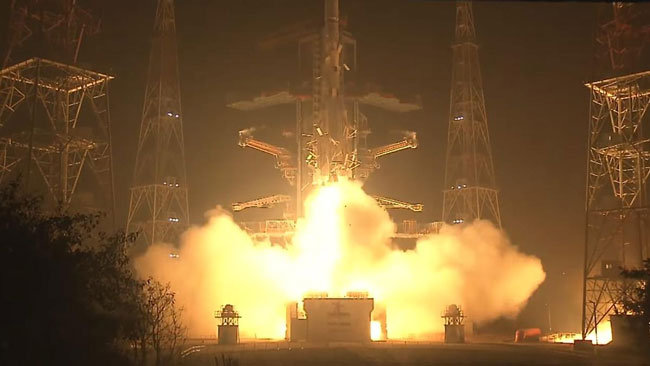Sriharikota: In a significant achievement for India’s space program, the Indian Space Research Organisation (ISRO) successfully launched its 101st satellite, EOS-09, aboard the Polar Satellite Launch Vehicle (PSLV-C61) on Sunday morning. The launch took place from the Satish Dhawan Space Centre (SDSC) in Sriharikota.
“LIFTOFF! ISRO’s 101st launch mission takes flight aboard PSLV-C61,” the space agency posted on X (formerly Twitter), marking the latest in a long line of reliable PSLV missions. This also marked the 63rd flight of the PSLV and the 27th flight using the PSLV-XL configuration.
About EOS-09
The newly launched EOS-09 is an advanced Earth Observation Satellite equipped with C-band synthetic aperture radar (SAR) technology. This enables it to capture high-resolution images of the Earth’s surface, irrespective of weather conditions or time of day. Such capability is crucial for sectors such as agriculture, forestry, disaster management, and even strategic and military surveillance.
“This satellite is a part of a larger constellation that provides vital data about environmental changes and can monitor borders for security purposes,” said Scientist W. Selvamurthy, who congratulated ISRO’s scientists, technicians, and partner industries for the successful mission.
A Push Towards Sustainable Space Operations
The mission also sets a precedent in responsible space practices. After the deployment of EOS-09 into a Sun Synchronous Polar Orbit (SSPO), ISRO plans to use Orbit Change Thrusters (OCT) to lower the altitude of the rocket’s PS4 stage, followed by passivation—a process to reduce the stage’s orbital life. Notably, EOS-09 is also equipped with deorbiting fuel, ensuring safe disposal at the end of its operational life. These measures underline ISRO’s commitment to minimizing space debris and promoting sustainability in orbit.
Public Reaction and Security Restrictions
While the mission was a technological success, the public viewing experience was affected by heightened security measures in light of recent India-Pakistan tensions. Families and schoolchildren who had traveled long distances to witness the launch expressed disappointment at not being allowed into the public viewing area of SDSC.
“We came from Ranipet to see the launch, but due to the situation between India and Pakistan, we were not allowed. Still, I feel proud to be here,” a young visitor told ANI.
Another student, who traveled over 150 kilometers, shared his dream of becoming the ISRO Chairman someday. “Though we couldn’t see the launch this time, I’ll surely come again. I’m deeply interested in space science,” he said.
Continuing ISRO’s Legacy
ISRO’s statement following the launch emphasized the agency’s continued commitment to delivering reliable performance across diverse payloads and orbits. The EOS-09 mission stands as a testament to ISRO’s growing capabilities in Earth observation, space sustainability, and national security.
With this launch, ISRO continues to strengthen its position as a leader in space technology, combining innovation with responsibility.




